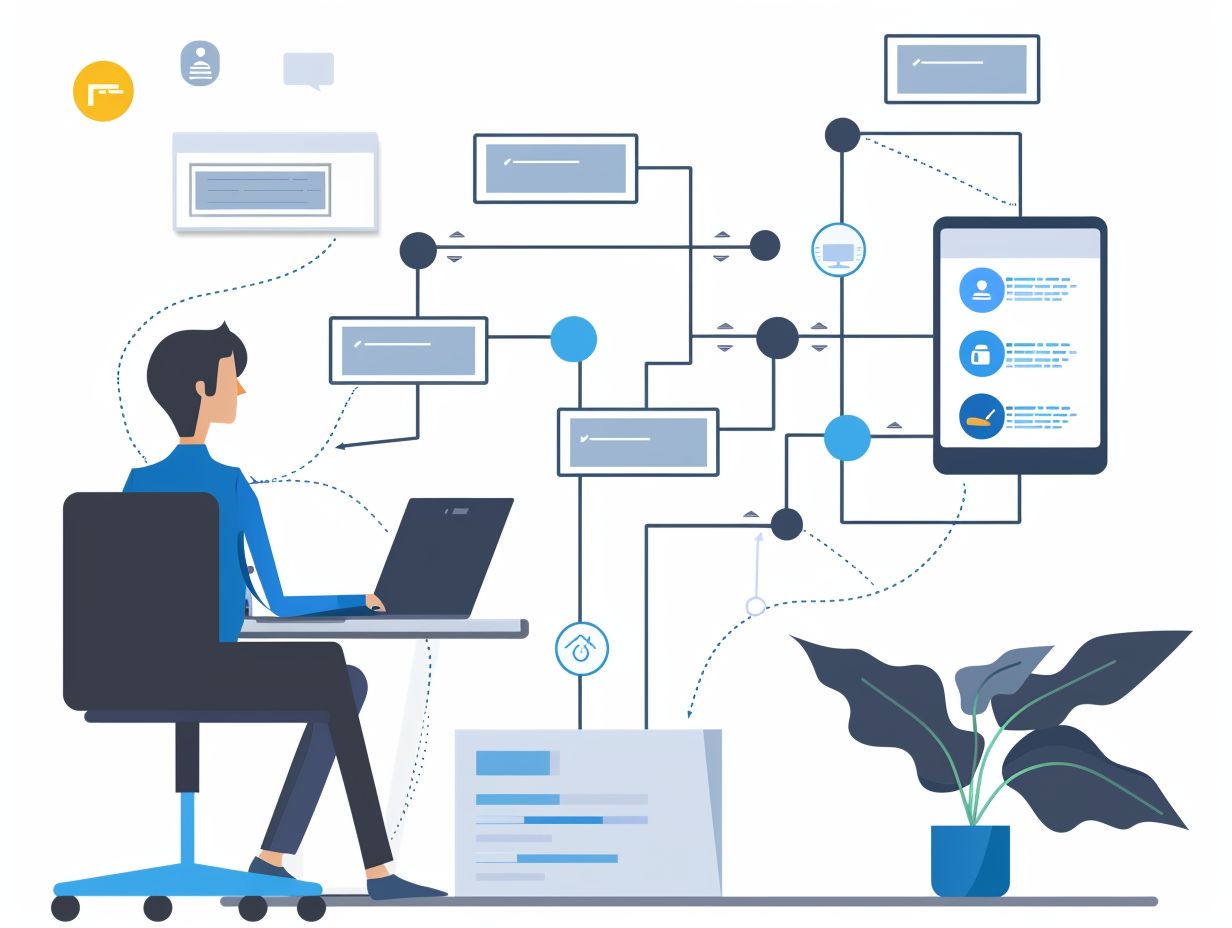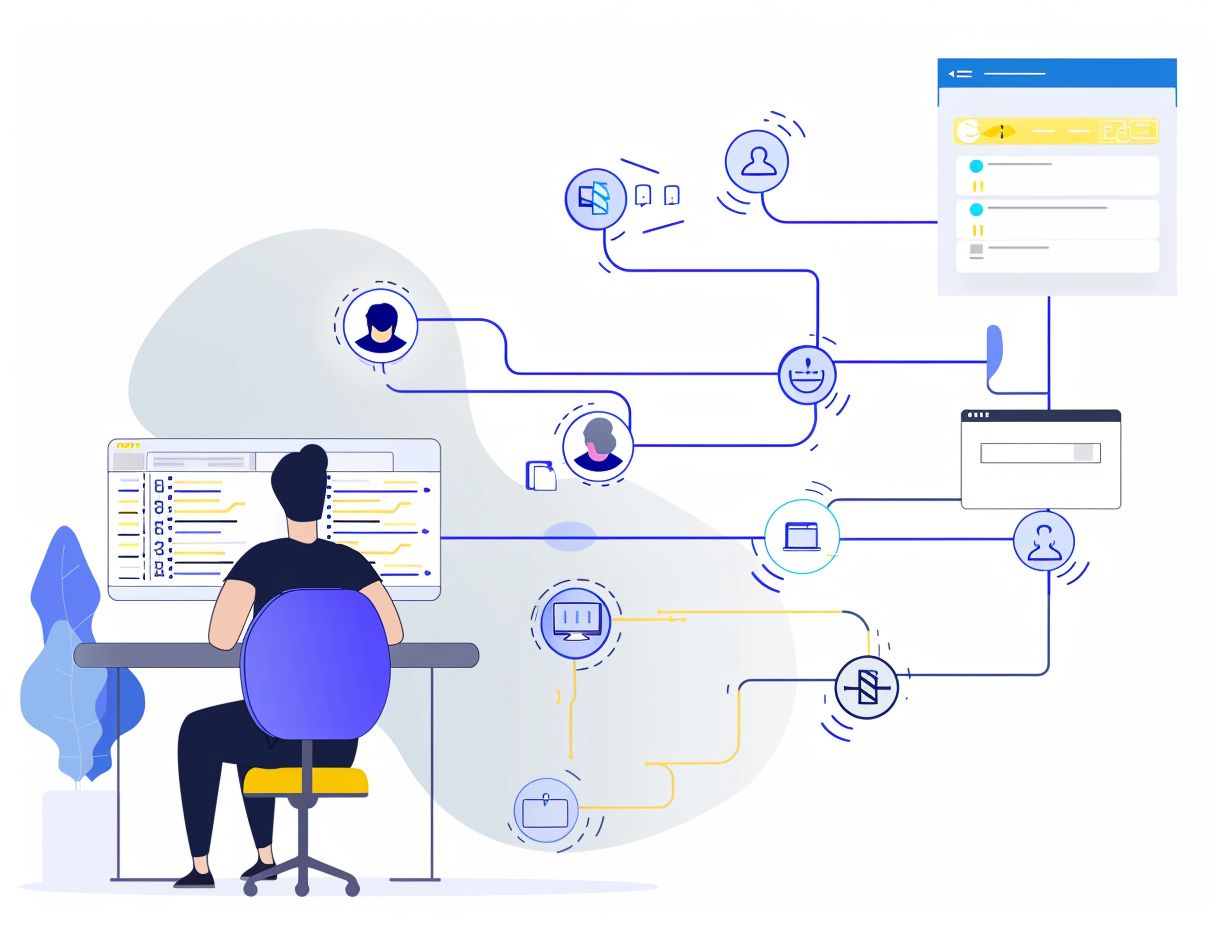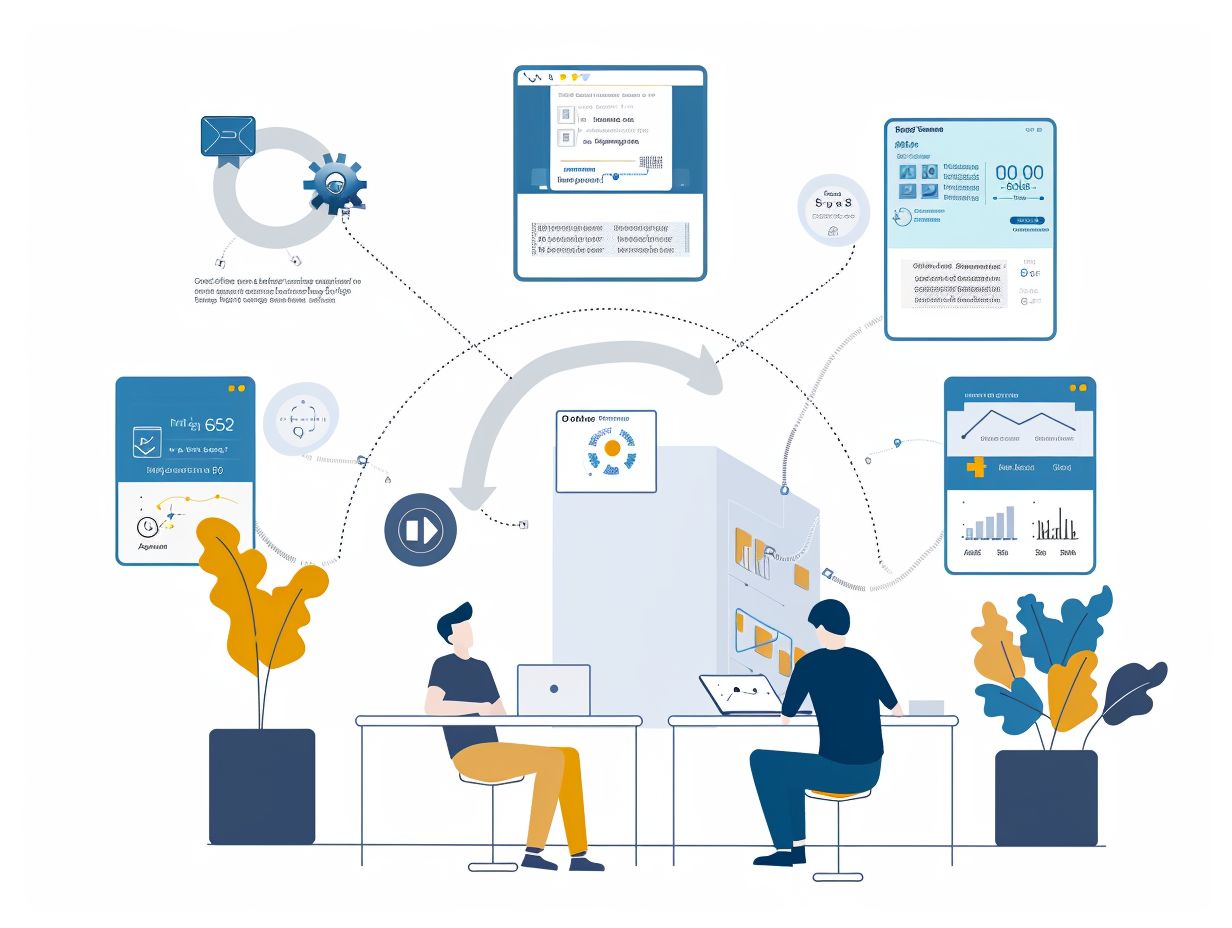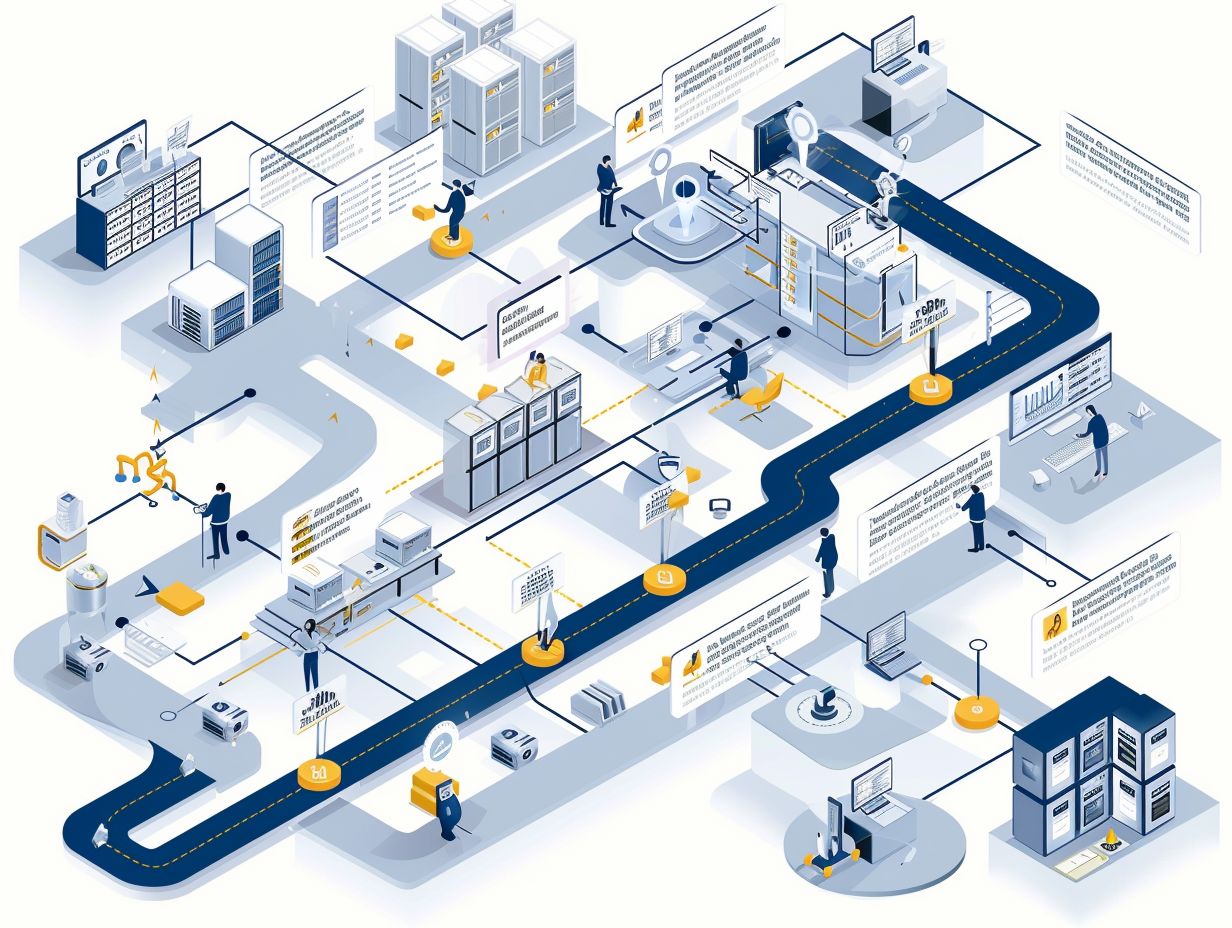Implementing XDR: A Step-by-Step Guide for Businesses

Have you heard about XDR but are uncertain about its implications or significance for your business?
In this in-depth guide, the concept of XDR will be dissected, and its importance in the current cybersecurity environment will be elucidated.
From evaluating your existing security protocols to selecting the appropriate XDR solution and evaluating its effectiveness, you will be guided through the sequential procedure of integrating XDR into your company.
Continue reading to discover how you can augment your business security with XDR.
Key Takeaways:

What is XDR and Why is it Important?
XDR, which stands for Extended Detection and Response, is a comprehensive security solution that integrates multiple security components like Microsoft Defender and Sentinel. It plays a crucial role in enhancing cybersecurity by providing advanced threat detection, response capabilities, and centralized visibility across an organization’s digital environment.
By bringing together endpoint detection, network security, and email security into a unified platform, XDR offers a holistic approach to cybersecurity. This enables organizations to correlate data from various sources, detect complex threats in real-time, and respond swiftly to incidents. Microsoft Defender and Sentinel, being key components of XDR, provide advanced threat intelligence and analysis, further strengthening the security posture. With the increasing sophistication of cyber threats, the proactive and integrated approach of XDR is essential for organizations seeking robust protection against evolving security challenges.
Preparing for XDR Implementation
Ahead of embarking on XDR implementation, it is crucial for you to conduct comprehensive research and familiarize yourself with the guidance offered by industry authorities like the Enterprise Strategy Group and TechTarget. This initial phase of preparation serves as the cornerstone for a successful integration of XDR within your organization.
Assessing Current Security Measures
Before integrating XDR, you need to assess the effectiveness of your current security measures provided by top cybersecurity vendors such as Palo Alto Networks, Trend Micro, and Cisco. Understanding the strengths and weaknesses of your existing solutions is crucial for identifying the gaps that XDR can effectively address.
By conducting a comprehensive assessment of your cybersecurity environment, you can gain valuable insights into the robustness of your current infrastructure against cyber threats. This evaluation process entails examining the functionalities and performance of security tools from various vendors, including Palo Alto Networks, Trend Micro, and Cisco. Identifying potential vulnerabilities and loopholes in your current security measures enables you to strategically enhance your overall defense mechanisms.
Furthermore, this assessment reveals the specific areas where XDR, with its integrated approach to threat detection and response, can seamlessly complement and strengthen your existing security posture.
Identifying Key Stakeholders and Budgeting
Identifying key stakeholders within your organization and developing a clear budget plan are essential steps in preparing for XDR implementation. Involving major players such as CrowdStrike, SentinelOne, and Fortinet in the decision-making process ensures alignment with your organizational objectives and security needs.
By involving stakeholders early in the process, you can gain valuable insights into their specific requirements and issues, enabling a more customized implementation strategy. Establishing a budget plan aids in resource allocation in a strategic and efficient manner, guaranteeing that the implementation remains on schedule and within budget constraints. Collaboration with cybersecurity firms like CrowdStrike, SentinelOne, and Fortinet provides specialized expertise and tools, bolstering your overall security readiness and posture for XDR implementation.
Step-by-Step Guide for XDR Implementation

- To implement XDR in a systematic manner, you should follow a step-by-step guide.
- This involves selecting the appropriate XDR solution.
- Establish clear objectives with the assistance of security experts such as Symantec, Carbon Black, and Trellix.
- Provide training to employees to guarantee seamless integration.
1. Choose an XDR Solution
When selecting the most suitable XDR solution, it is vital to consider reputable providers such as Secureworks, Cybereason, and Qualys. This decision significantly impacts the overall effectiveness of your organization’s cybersecurity defense. Each solution offers unique features and capabilities that are tailored to specific security needs.
Secureworks is recognized for its proactive threat hunting and real-time monitoring, providing robust protection against advanced cyber threats. In contrast, Cybereason excels in behavioral analytics and endpoint detection capabilities, enabling swift responses to potential security incidents. Qualys, with its comprehensive vulnerability management and cloud security features, ensures a strong defense posture across all digital assets.
Therefore, organizations must thoroughly assess their requirements and align them with the distinct offerings of these providers to enhance their cybersecurity resilience.
2. Define Objectives and Goals
Defining clear objectives and goals is essential for a successful XDR implementation. Your goals should align with your organization’s security strategy, compliance requirements, and overall business objectives to ensure that XDR deployment delivers measurable outcomes.
To establish these objectives, organizations typically conduct a thorough assessment of their current security posture, identify potential gaps in threat detection and response capabilities, and evaluate the specific compliance regulations relevant to their industry. By taking these steps, you can tailor your XDR implementation to address the unique challenges you face while staying in line with industry best practices and legal requirements. This strategic approach not only enhances the effectiveness of XDR but also strengthens the overall cybersecurity framework of your organization.
3. Train Employees and Establish Protocols
Training your employees on XDR functionalities and establishing clear security protocols are essential steps to give the power to your workforce to effectively utilize the XDR system. Providing comprehensive training and guidance ensures that your employees are equipped to respond to potential threats proactively.
When your employees are well-versed in the functionalities of XDR and understand the established protocols, they can more adeptly monitor, detect, and respond to security incidents. By preparing your workforce through ongoing training, your organization creates a culture of vigilance and readiness, bolstering its overall security posture. Clear protocols help streamline response efforts during incidents, minimizing the impact of breaches. Through continuous learning initiatives and protocol refinement, your company can stay ahead in the ever-evolving landscape of cybersecurity threats.
4. Test and Fine-Tune the XDR System
Conducting thorough testing and fine-tuning of your XDR system is a critical phase to ensure its effectiveness in detecting and responding to cyber threats. Regular testing, feedback collection, and system optimization are essential for maintaining optimal security posture.
This iterative process involves analyzing data from simulated attacks and real-world incidents to identify any weaknesses or gaps in the system’s threat detection capabilities. By incorporating threat intelligence feeds and machine learning algorithms, your XDR system can be continuously enhanced to adapt to evolving threats. Leveraging user behavior analytics and automated response mechanisms further strengthens the system’s ability to detect and mitigate security incidents promptly.
Continuous monitoring and adjustment based on insights gained from testing play a pivotal role in bolstering your XDR system’s performance and resilience against sophisticated cyber threats.
Measuring Success and Maintaining XDR

The success of your XDR implementation is measured through continuous monitoring, proactive system updates, and evaluation of its impact on overall business security. Maintaining XDR necessitates a holistic approach that prioritizes real-time threat response and system optimization.
Monitoring and Updating the System
Continuous monitoring and timely updates of your XDR system are essential to ensure ongoing protection against evolving cyber threats. Regular monitoring will help you detect anomalies, while prompt updates will enhance your system’s resilience and threat response capabilities.
By staying vigilant through continuous monitoring, your organization can spot suspicious activities or potential security breaches in real time, enabling swift mitigation measures to be implemented. Proactively updating your XDR system will not only bolster its defense mechanisms but also ensure that it remains equipped to combat the latest cyber threats.
This approach fosters a proactive cybersecurity posture that is crucial in today’s rapidly changing threat landscape, where being reactive is simply not enough to safeguard valuable assets and sensitive information.
Evaluating the Impact of XDR on Business Security
When evaluating the impact of XDR on your business’s security, it is essential to analyze key performance indicators, incident response metrics, and overall security posture improvements. This assessment allows you to fine-tune your security strategies and optimize threat mitigation efforts.
By examining performance metrics, you can gain valuable insights into the efficiency of your security operations and the effectiveness of XDR solutions in detecting and responding to threats. Understanding incident response outcomes provides a basis for evaluating the strengths and weaknesses of your current security infrastructure. This evaluation process helps identify potential vulnerabilities and areas for improvement, guiding your organization towards a more robust and proactive security posture.
Utilizing these evaluation insights can influence future security investments and operational decisions, ensuring a resilient security framework against evolving cyber threats.
Frequently Asked Questions
What is XDR and why is it important for businesses?
XDR (Extended Detection and Response) is a comprehensive security solution that combines multiple security technologies and data sources to provide a unified view of an organization’s security posture. It is important for businesses because it helps detect and respond to cyber threats in a timely and effective manner, reducing the risk of data breaches and other security incidents.
How does XDR differ from traditional security solutions?

Traditional security solutions are often siloed, meaning they operate independently and do not communicate with each other. XDR, on the other hand, integrates different security technologies and data sources, allowing for better threat detection and response capabilities.
What are the key benefits of implementing XDR for businesses?
Implementing XDR can bring numerous benefits to businesses, including improved threat detection and response, increased visibility and control over their security posture, and reduced costs and complexity through consolidation of security tools.
What are the steps involved in implementing XDR for a business?
The steps involved in implementing XDR for a business may vary depending on the specific solution chosen, but generally include assessing the organization’s current security posture, selecting an XDR solution, configuring and integrating the solution with existing security tools, and ongoing monitoring and maintenance.
How can businesses ensure a successful implementation of XDR?
To ensure a successful implementation of XDR, businesses should thoroughly evaluate their current security capabilities and needs, choose an XDR solution that best fits their requirements, involve key stakeholders in the implementation process, and regularly review and adjust the solution to address evolving threats.
Are there any potential challenges or obstacles to implementing XDR for a business?
While XDR can bring significant benefits to businesses, there may be some challenges or obstacles to consider, such as the need for strong technical expertise and resources to properly configure and manage the solution, potential compatibility issues with existing security tools, and the cost of implementing and maintaining the solution.









